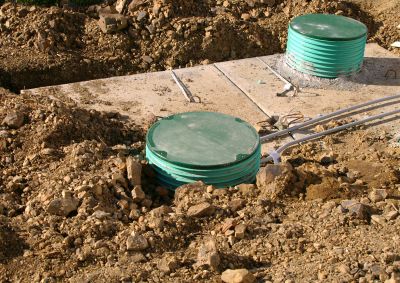Favorite Products For Septic Tank Installation You Can Rely On
Get insights into dependable products that ensure your septic system is installed correctly and functions efficiently.
 Installing a septic tank system requires a comprehensive selection of products designed to ensure proper function, durability, and compliance with local codes. From the initial excavation supplies to the final connection fittings, each component plays a vital role in creating an efficient and reliable sewage management system. Choosing quality materials and appropriate accessories can help prevent common issues such as leaks, blockages, or system failure, ultimately extending the lifespan of the installation.
Installing a septic tank system requires a comprehensive selection of products designed to ensure proper function, durability, and compliance with local codes. From the initial excavation supplies to the final connection fittings, each component plays a vital role in creating an efficient and reliable sewage management system. Choosing quality materials and appropriate accessories can help prevent common issues such as leaks, blockages, or system failure, ultimately extending the lifespan of the installation.
Top Overall Option
Septic Tank Access and Maintenance Kit
A comprehensive septic tank access kit typically includes durable risers, secure lids, and inspection ports, providing easy access for maintenance and inspections. Designed for compatibility with various tank sizes, these kits facilitate routine upkeep and help ensure the longevity of the system.
Types of Products For Septic Tank Installations
Septic Tanks
Precast concrete or polyethylene tanks designed to contain and treat sewage on-site, available in various sizes to suit different property needs.
Inlet and Outlet Fittings
Connectors that secure pipes to the septic tank, ensuring a leak-proof seal and proper flow of waste into and out of the system.
Distribution Boxes
Components that evenly distribute effluent to the drain field, promoting uniform absorption and reducing system stress.
Effluent Filters
Filters installed at the outlet of the septic tank to prevent solids from entering the drain field, reducing clogs and backups.
Risers and Lids
Access points that elevate the septic tank for easier inspection and maintenance, often made of durable plastic or concrete.
Inspection Chambers
Accessible chambers that allow for inspection and cleaning of the septic system components.
Pump Tanks
Additional tanks used in systems where gravity flow is insufficient, aiding in wastewater movement.
Vent Pipes
Components that allow gases to escape safely from the septic system, preventing pressure buildup.
Drain Field Components
Includes pipes, gravel, and fabric to establish an effective drain field for effluent dispersal.
Backfill Materials
Specialized gravel or soil used to properly backfill around septic tanks and pipes, ensuring stability and drainage.
Popular Choices
Elevate access points for easier inspection and maintenance, widely used across various systems.
Commonly installed to prevent solids from entering the drain field, helping to maintain system efficiency.
Reliable connections for waste flow, available in various sizes and materials to suit different setups.
Available in different capacities and materials, serving as the primary component of the system.
Ensure even distribution of effluent to the drain field, supporting system longevity.
Allow for routine checks and cleaning, essential for maintaining system health.
Perforated pipes that distribute effluent evenly across the drain field area.
Used in systems requiring pumped flow, suitable for properties with challenging terrain.
Facilitate gas escape, reducing pressure buildup and odor issues.
Supports proper drainage around pipes and tanks during installation.
Septic tank installations typically involve several key product categories, including tanks, inlet and outlet fittings, distribution boxes, effluent filters, and maintenance access ports. Proper planning and selection of these components are essential to accommodate the specific requirements of the property, such as soil type, usage volume, and local regulations. It is also important to consider the compatibility of parts to ensure seamless integration and long-term performance.
When selecting products for septic tank installations, durability and ease of installation are critical factors. Materials like high-density polyethylene or concrete are commonly used for tanks due to their strength and resistance to corrosion. Accessories such as risers and lids facilitate access for inspection and maintenance, while inlet and outlet fittings must be secure and leak-proof. Additionally, including effluent filters can help prevent solids from entering the drain field, reducing the risk of clogs and system backups.
Properly equipped septic systems not only function more efficiently but also help in maintaining the health of the entire wastewater management process. Regular inspection and maintenance components, like cleanout ports and inspection chambers, are essential for ongoing system health. Investing in high-quality, compatible products tailored to the specific needs of your installation site can contribute significantly to a smooth and trouble-free septic system operation.
Key Buying Considerations
- Tank capacity should match household size and usage patterns.
- Material durability and resistance to corrosion or cracking are essential for longevity.
- Compatibility of inlet and outlet fittings with existing plumbing is crucial.
- Ease of access for maintenance, inspection, and cleaning should be prioritized.
- Local building codes and regulations may specify certain product standards.
- Proper sizing of distribution and drain field components helps ensure system efficiency.
- Ease of installation can impact overall project timeline and costs.
- Availability of replacement parts and accessories can facilitate future maintenance.
- Consider the weight and transportation requirements of larger tanks.
- Ensure all components are designed to work together seamlessly.
- Quality of seals and gaskets impacts leak prevention and system integrity.
- Assess the ease of integrating additional components like pumps or alarms if needed.
- Budget constraints should be balanced with the quality and durability of products.
- Look for products with clear installation instructions or support from manufacturers.
- Evaluate the long-term maintenance requirements and accessibility of system components.
